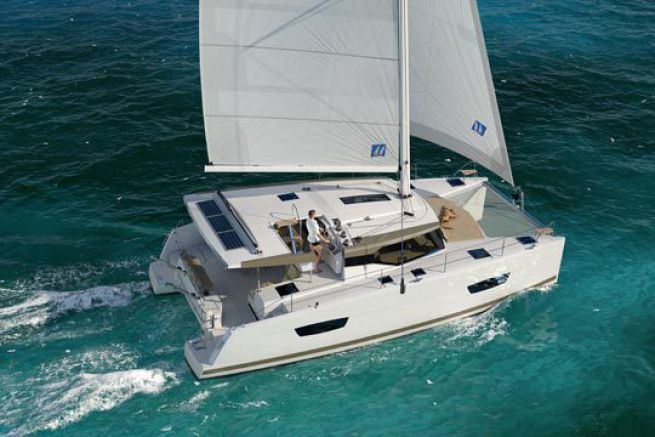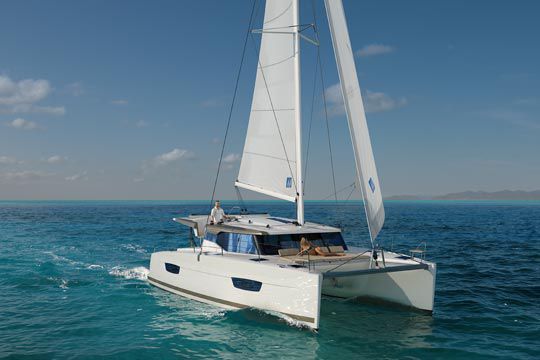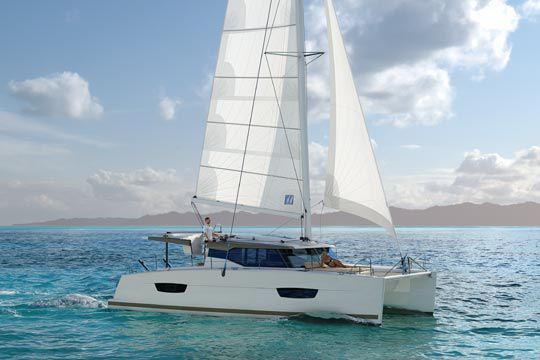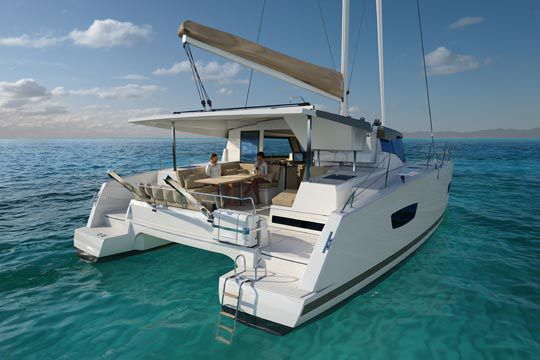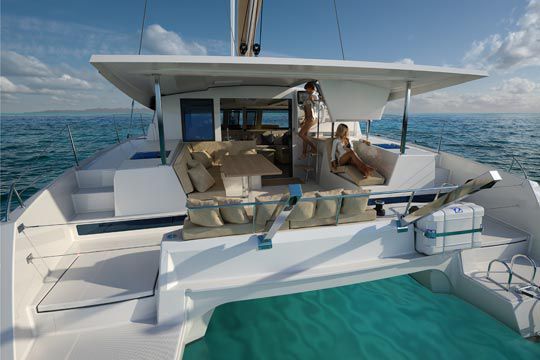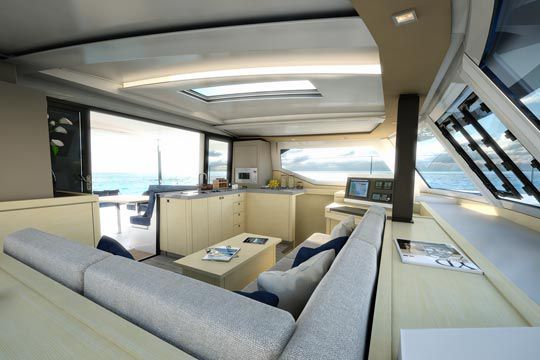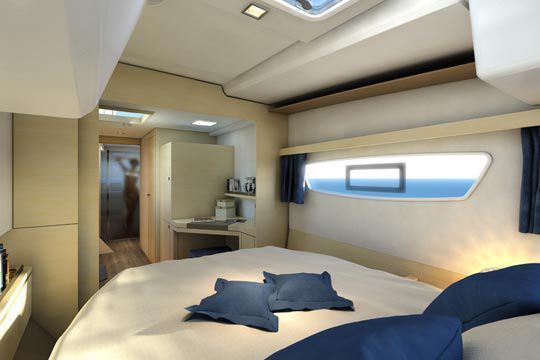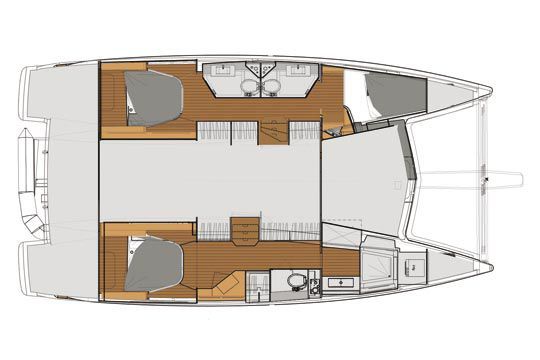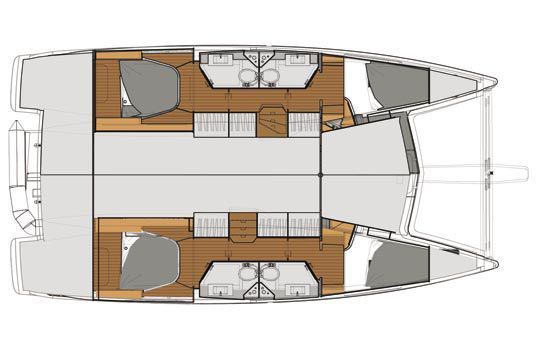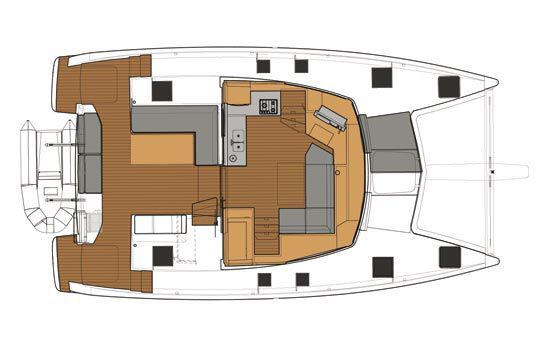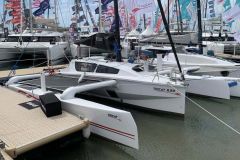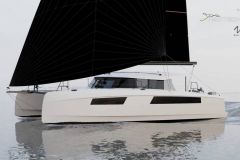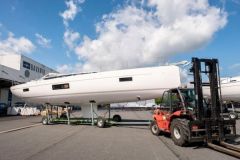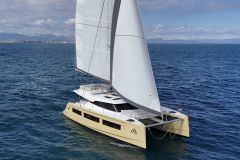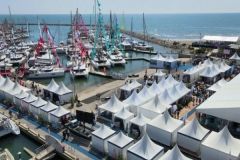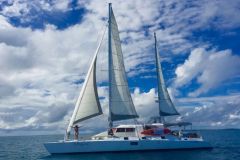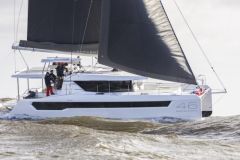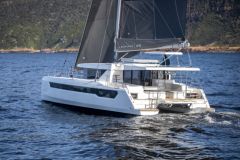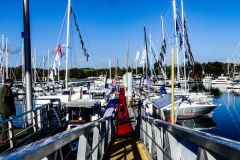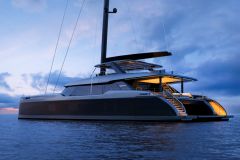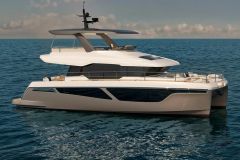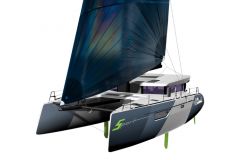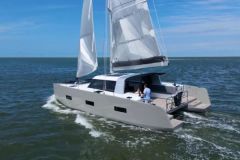Before his departure for other professional skies, Jean-François Fountaine (now Mayor of La Rochelle) had asked the architectural firm Berret-Raccoupeau to recreate a homogeneous and modern range. While until now Olivier Raccoupeau has been focusing more on the site's large models (Saba 50 and especially the Ipanema 58 which is in the finishing phase), this time it is on the smallest of the range that he has worked on.
The result is a catamaran that is positioned like the little brother of the Helia and the Sheba, with the same external lines. A unit of 11.70 m (only 38 feet despite its commercial name of 40...) with a cockpit cockpit cockpit (so not too high) and a rigid bimini that protects the cockpit and on which is located the mainsail rail, keeping all ropes away from the living area, bringing all manoeuvres back to the helm station.
We contacted Olivier Raccoupeau to present his vision of the project, a project that should see the first unit presented in 2016. "The market is changing, we have to rethink the sailboats according to a clientele that demands more comfort," he explains. "In comparison with the Lipari 41 designed by Joubert-Nivelt, we started from a blank sheet of paper to design the FP40. We have larger hulls to offer beautiful interior spaces and also support a higher weight due to the fittings. These volumes also offer the advantage of limiting the boat's movements, especially pitching, always in order to provide comfort for the crew at sea. Unfortunately, wide hulls and more weight on board penalize performance. To counteract it, we increase the sail area."
Even if Olivier Raccoupeau admits that he likes light and fast boats, "the weight saving by using high-tech materials like carbon is not possible on a mass production boat. Indeed, the market is too competitive not to try to offer the lowest price, incompatible with expensive materials."
Concerning this new FP40, the architect indicates that he is attentive to the new open catamaran market (such as the Nautitech or Bali) even if he does not see a real enthusiasm from buyers. "For several models already, we have favoured a large cockpit with a very large opening window, but we have not transferred all our life to the outside."
What marks the first sketches of the FP40 is the abandonment of the mast pit, which always obstructed the view of the square to the front. "On the FP40, we replaced it with a sponge that takes over the efforts of the mast on the wall below. This gives a nice view of the front. We have also taken over the zenithal glass surface, which provides a lot of light. A very appreciable gain even if at certain times of the day, this glass surface heats up the square a little."
Given the boat's short length, it was not a question of installing a real cockpit in the bow, but just "to accessorize this bow deck with a sunbathing area to create a space isolated from the rest of the boat".
As we can see, this catamaran does not revolutionize the genre, but provides a modern and sensible response with refined volumes and lines to meet the needs of customers who are looking to sail with ever greater comfort.
3 cabin version with starboard owner hull
Version 4 cabins, 4 toilets
Arrangement of the saloon and cockpit
Features and characteristics
Overall length: 11.73 m
Overall width: 6.63 m
Light weight: 8900 kg approx.
Draught: 1.2 m
Mainsail area: 58 m² m²
Genoa area: 37 m² / 37 m²
Standard engines: 2 x 20 HP
Tank capacity
- Fresh water: 2 x 265 l
- Diesel: 300 l approx.
Architect: Berret-Raccoupeau Yacht Design
